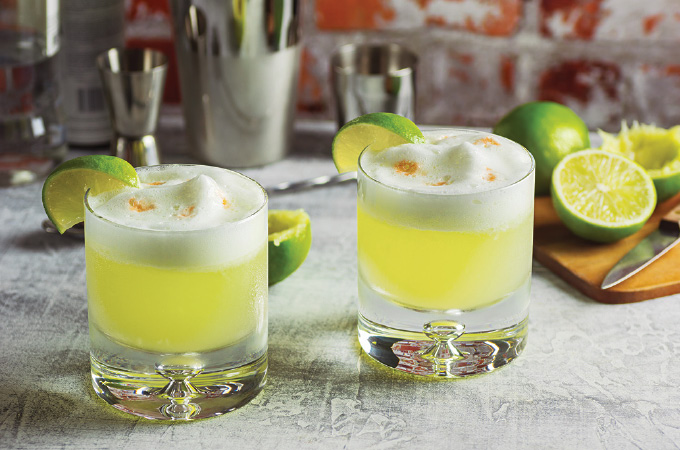If you ever want to start a heated discussion, just ask a Chilean and a Peruvian who created pisco. There is a strong possibility both sides will claim its conception. Pisco, distilled with grapes, is considered a brandy. Both countries take credit for its creation and each follows its own set of distinct rules for distilling this spirit.
peruvian pisco
>> Can only be created in five regions: Ica, Lima, Arequipa, Tacna and Moquegua
>> Only eight grape varieties can be used in the distillation process.
>> Must be distilled in copper stills once at proof of 38% to 48% ABV
>> Cannot be diluted with water or have added flavors of any kind
>> Must age three months in stainless steel or glass. No wood aging is allowed.
chilean pisco
>> Can only be created in the Atacama and Coquimbo regions
>> Can be distilled multiple times and may be diluted with water to get to desired proof
>> Aged a minimum of two months in glass or stainless steel. French or American oak barrel aging is allowed.
main types
>> Puro: produced with one grape variety
>> Mosto verde: distilled from partially fermented must
>> Acholado: distilled with a blend of the must from several different grapes
pisco sour
2 oz. pisco
1 oz. lime juice
3/4 oz. simple syrup
1 egg white
dash of angostura bitters
Fill cocktail shaker with ice, pisco, lime juice, simple syrup and egg white. Shake vigorously for 15 seconds and strain into cocktail glass. Garnish with bitters.
chilcano
2 oz. pisco
1/4 oz. fresh lime juice
ginger beer
lime twist for garnish
Add all ingredients to highball glass. Fill with ice, stir and garnish with lime twist.
Justin Wolf is sommelier at The Four Seasons Hotel – St. Louis.
